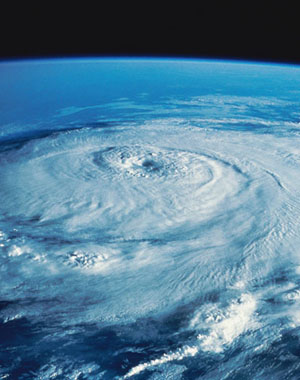Prepare Now For Busy 2009 Hurricane Season

Experts are forecasting six hurricanes and 12 named tropical storms this year, but Alabamians need only remember one name this hurricane season — Opal.That’s because Opal, a Category 4 behemoth that slammed the Southeastern U.S. in 1995, taught a lesson that should be taken to heart: You don’t have to live on the Gulf Coast to feel the fury of a hurricane. More important, perhaps, is that you can minimize the damage with some common-sense preparation.Opal, which made landfall at the panhandle of Florida in October 1995, traveled up the entire state of Alabama before being downgraded to a tropical storm. But, before it weakened, Opal’s peak rainfall in Alabama was 19.42 inches three miles east-northeast of Brewton with lesser amounts in Mobile (almost 7.5 inches) and more than six inches all the way to Anniston in northeast Alabama.Opal’s highest gust reported in Alabama was a 95 mph gust at Fort Rucker and a secondary one at Maxwell Air Force Base in Montgomery with a gust of 90 mph. Opal’s highest sustained winds reported in the state were 75 mph at Fort Rucker, 55 mph in downtown Mobile and 47 mph at Maxwell AFB.For those reasons alone, Alabamians should take heed and plan ahead for the 2009 hurricane season, which runs June 1-Nov. 30.According to forecasters Philip Klotzbach and William Gray of Colorado State University, conditions that cause a hurricane can change very quickly which makes forecasting far from an exact science.That’s why the National Oceanic and Atmospheric Administration (NOAA) offers these safety tips as part of its guide for being prepared during hurricane season:BEFORE THE SEASON…– Determine safe evacuation routes– Learn location of official shelters– Make emergency plans for pets– Review your insurance policy– Prepare a stock of hurricane supplies– Clear loose and clogged drain guttersDURING THE STORM…When a hurricane watch is in effect…– Listen frequently to weather reports to keep up with latest forecasts– Fuel and service your vehicles– Inspect and secure mobile home tie-downs– Board up windows in case the storm moves quickly and you have to evacuate– Store lawn furniture and other loose, light-weight objectsWhen in a warning area…– Closely monitor weather– Close storm shutters– Follow instructions issued by local officials (always evacuate if ordered)If staying home…– Turn refrigerator to maximum cold and keep it closed– Turn off utilities if told to do so by authorities– Turn off propane tanks– Unplug small appliances– Fill bathtub and containers with water in case tap water is unavailable. Use water in bathtubs for cleaning and flushing only.If winds become strong…– Stay away from windows and doors–Take refuge in small first-floor interior rooms– Close all interior doors– Secure and brace external doorsBe alert for…– Tornadoes– The calm eye of the storm– Storm surge floodingAFTER THE STORM…– Keep listening to weather and news reports– Wait until an area is declared safe before entering– Watch for closed roads– Never drive down a flooded street– Avoid weakened bridges and washed-out roads– Check appliances for damage– Use a flashlight to inspect for damage, not an open flame– Do not drink or prepare food with tap water until officials say it is safe.
